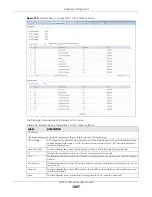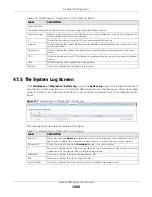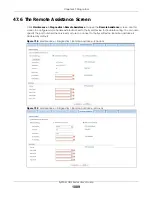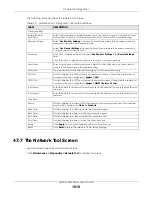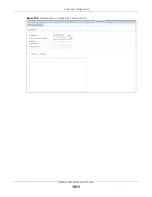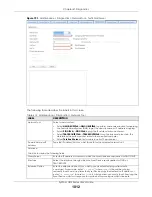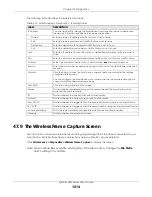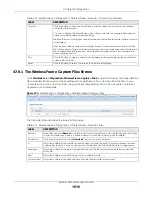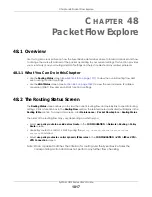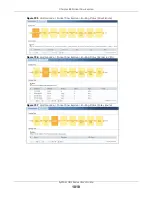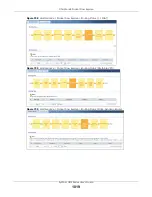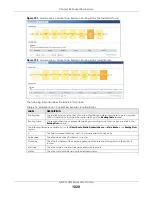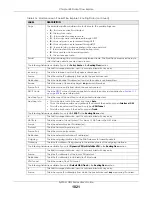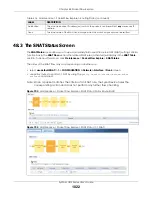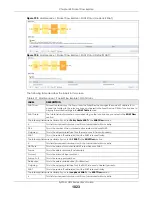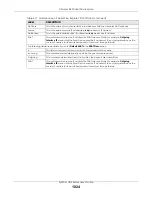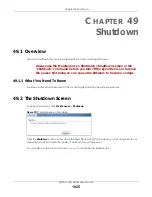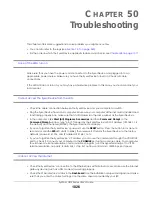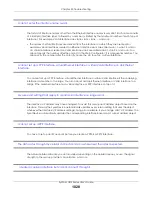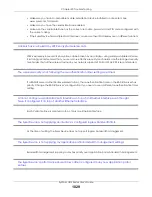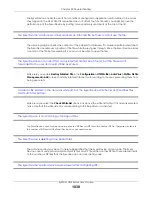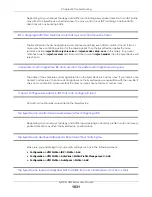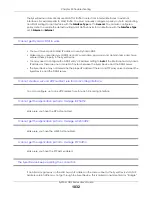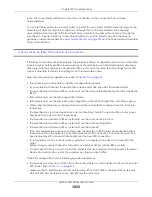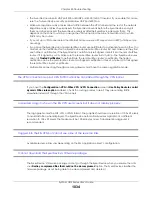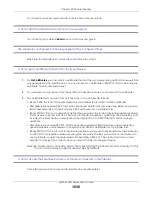
Chapter 48 Packet Flow Explore
ZyWALL USG Series User’s Guide
1021
Flags
This indicates additional information for the route. The possible flags are:
•
A
- this route is currently activated.
•
S
- this is a static route.
•
C
- this is a direct connected route.
•
O
- this is a dynamic route learned through OSPF.
•
R
- this is a dynamic route learned through RIP.
•
B
- this is a dynamic route learned through BGP.
•
G
- the route is to a gateway (router) in the same network.
•
!
- this is a route which forces a route lookup to fail.
•
B
- this is a route which discards packets.
•
L
- this is a recursive route.
Persist
This is the remaining time of a dynamically learned route. The Zyxel Device removes the route
after this time period is counted down to zero.
The following fields are available if you click
Policy Route
in the
Routing Flow
section.
#
This field is a sequential value, and it is not associated with any entry.
Incoming
This is the interface on which the packets are received.
Source
This is the source IP address(es) from which the packets are sent.
Destination
This is the destination IP address(es) to which the packets are transmitted.
Service
This is the name of the service object.
any
means all services.
Source Port
This is the source port(s) from which the packets are sent.
DSCP Code
This is the DSCP value of incoming packets to which this policy route applies. See
for more information.
Next Hop Type
This is the type of the next hop to which packets are directed.
Next Hop Info
• This is the main route if the next hop type is
Auto
.
• This is the interface name and gateway IP address if the next hop type is
Interface /GW
.
• This is the tunnel name if the next hop type is
VPN Tunnel
.
• This is the trunk name if the next hop type is
Trunk
.
The following fields are available if you click
1-1 SNAT
in the
Routing Flow
section.
#
This field is a sequential value, and it is not associated with any entry.
NAT Rule
This is the name of an activated 1:1 or Many 1:1 NAT rule in the NAT table.
Source
This is the external source IP address(es).
Protocol
This is the transport layer protocol.
Source Port
This is the source port number.
Destination
This is the external destination IP address(es).
Outgoing
This is the outgoing interface that the SNAT rule uses to transmit packets.
Gateway
This is the IP address of the gateway in the same network of the outgoing interface.
The following fields are available if you click
Dynamic VPN or SiteToSite VPN
in the
Routing Flow
section.
#
This field is a sequential value, and it is not associated with any entry.
Source
This is the IP address(es) of the local VPN network.
Destination
This is the IP address(es) for the remote VPN network.
VPN Tunnel
This is the name of the VPN tunnel.
The following fields are available if you click
Default WAN Trunk
in the
Routing Flow
section.
#
This field is a sequential value, and it is not associated with any entry.
Source
This is the source IP address(es) from which the packets are sent.
any
means any IP address.
Table 416 Maintenance > Packet Flow Explore > Routing Status (continued)
LABEL
DESCRIPTION
Summary of Contents for USG110
Page 27: ...27 PART I User s Guide ...
Page 195: ...195 PART II Technical Reference ...
Page 309: ...Chapter 10 Interfaces ZyWALL USG Series User s Guide 309 ...
Page 313: ...Chapter 10 Interfaces ZyWALL USG Series User s Guide 313 ...
Page 358: ...Chapter 10 Interfaces ZyWALL USG Series User s Guide 358 ...
Page 373: ...Chapter 10 Interfaces ZyWALL USG Series User s Guide 373 ...

